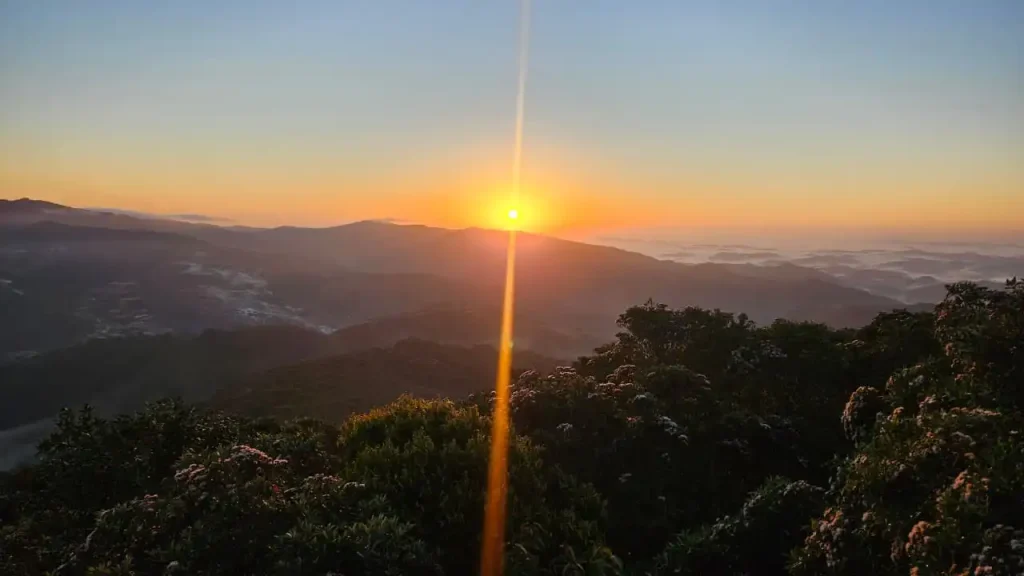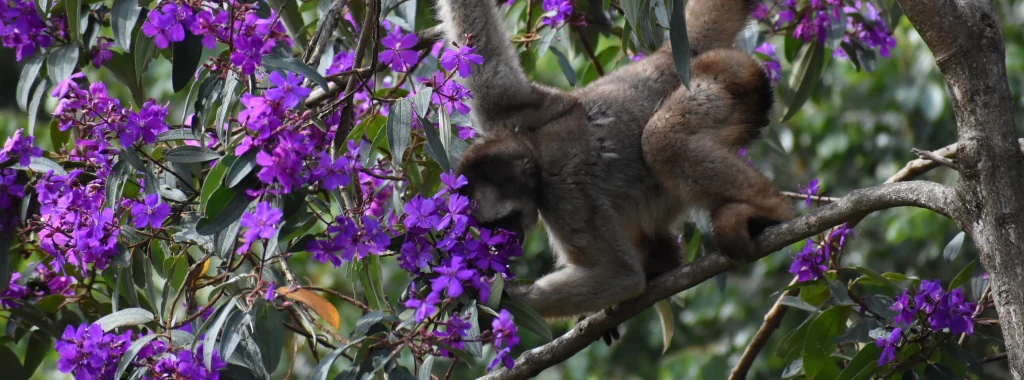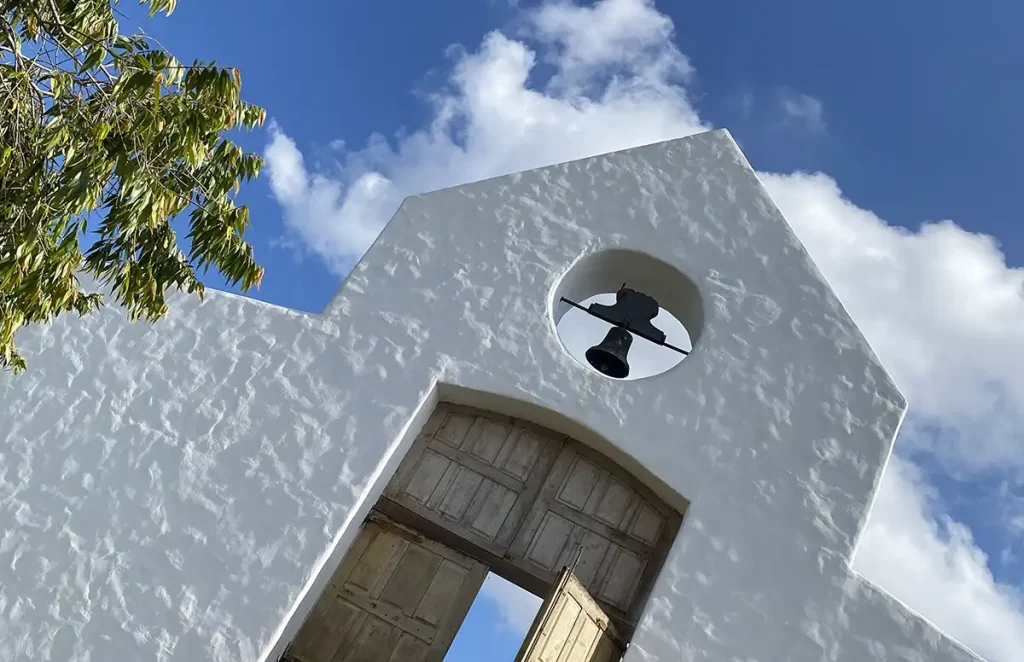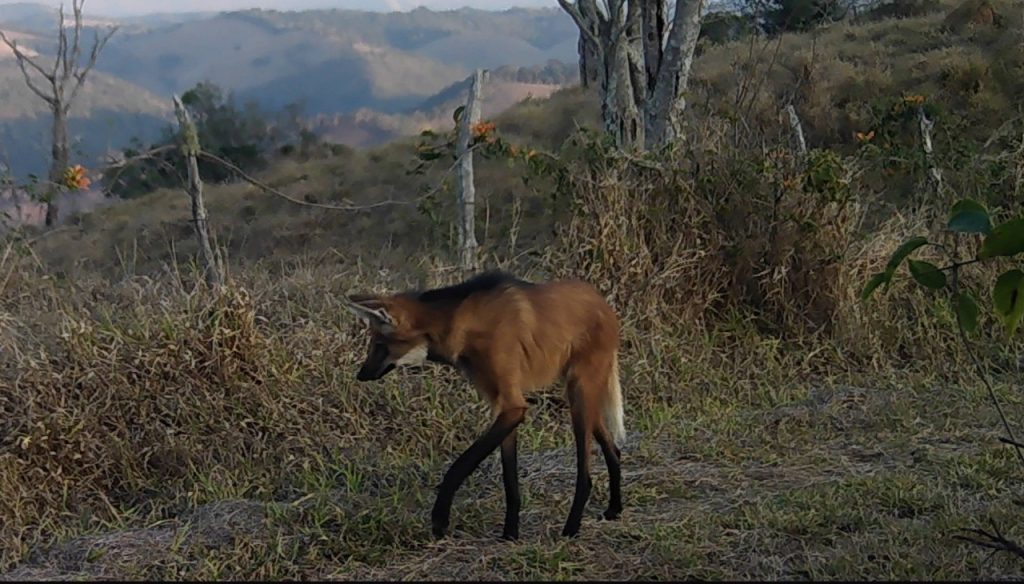Ibiti community turns sunrise into a ritual

No Ibiti, o nascer do sol é celebrado o ano inteiro. Um mesmo horizonte visto de muitos lugares, por muitos olhos, em dias diferentes. Para muitos, um hábito que não perde o encantamento. E por isso a cena inspira muitos cliques feitos por quem acorda cedo todas as manhãs: o recomeço de um novo dia. Quando a comunidade foi convidada a compartilhar imagens do sol nascendo no Ibiti – para ilustrar as celebrações de passagem de ano que ganhou o nome de Ibiti Rise -, a resposta veio de forma espontânea. Em poucos instantes, dezenas de fotografias surgiram. Ângulos distintos, cores únicas, instantes capturados por cada olhar especial. O que une todas elas não é a técnica, mas o sentimento, a percepção de que ali, naquele primeiro raio de luz, existe algo que desperta. Essa multiplicidade de olhares diz muito sobre o espírito do Ibiti, um lugar liberdade, onde cada pessoa experimenta a natureza à sua maneira, mas compartilhando a mesma essência. O nascer do sol, escolhido como imagem-símbolo do Ibiti Rise, traduz exatamente isso: o novo ano não começa com fogos ou excessos, mas com consciência e presença. Veja as imagens enviadas por colaboradores do Ibiti ao grupo Comunidade a pedido do Ibiti News! Um fim de ano para sentir A programação de Ano Novo no Ibiti Village, um dos conceitos de hospedagem na Vila Mogol, foi desenhada como um percurso conectado à natureza. Dias que convidam à desaceleração, ao encontro e à celebração consciente. Entre práticas de yoga ao amanhecer, circuito pelas águas de Ibitipoca, colheita no Gaia, almoço farm to table, concerto de piano e noites embaladas por música ao vivo, o tempo ganha outro ritmo. Um ritmo que respeita o corpo, a paisagem e os ciclos naturais. O ponto de convergência acontece no dia 31 de dezembro, com a celebração da passagem de ano Ibiti Rise. O plantio da paz, o sound healing ao entardecer e a chegada da noite na Oca criam o espaço para atravessar o ano com intenção. A trilha sonora fica por conta da banda Reggae Feelings, trazendo leveza, dança e vibração positiva para a virada. Vire o ano como quem abre uma nova página No dia seguinte, o Ibiti convida a meditar à beira da água. Tudo sugerindo que as comemorações de Ano Novo se transformem em um estado que se prolonga. Assim como o nascer do sol, que não acontece de repente, mas se revela aos poucos, o Ibiti Rise propõe um começo que amadurece com o tempo. Um convite para atravessar o ano com mais clareza, mais conexão e mais verdade. No Ibiti, o novo ano começa de dentro para fora. Venha viver o Ibiti Rise Central de Reservas: (32) 98449-2200
Secrets of the forest: get to know Ibiti's trees and their stories

Walking along the Ibiti trails is also a journey through time: each tree tells a story of regeneration, shelter and beauty. Their preservation begins with knowledge and respect for the environment. Ibiti's trees hold legends, meanings and are true guardians of the forest, providing shade, shelter and food for all living beings. And, of course, they are enchanting! Researchers who have been here have catalogued hundreds of species, including ipê-amarelo, quaresmeira, paineira, embaúba, mulungu, candeia, among many others. Many of these trees are marked with plaques, making them easy to recognize during your walk. Others are the protagonists of stories told by guides and local residents. Here are some of the most emblematic trees within the Ibiti Projeto territory, all recorded by the passionate eyes of visitors and project collaborators! Ipê-amarelo Native to South America and very present in Brazil, the ipê-amarelo is celebrated for the exuberance of its flowers which bloom at the end of winter, making it a true national symbol. Between August and September, it colors the forests of Ibiti and enchants visitors. The flowers, considered edible, are used by some chefs in gastronomy. And they attract various insects, bees and birds, especially hummingbirds, which play an essential role in pollination. Quaresmeira An ornamental tree native to Brazil, especially the Atlantic Forest. It usually blooms during the Lenten season, which gives it its popular name, attracting attention in the middle of the forest with its showy purple or pink flowers. Araucaria At the Mirante do Cruzeiro, 42 araucaria saplings have been planted, forming the symbol of peace. This species, which stands out in the landscape on the way to Areião, has existed on the planet for around 200 million years. It flowers between October and December. It produces pine cones that contain the pine nut, which ripens between April and June and serves as food for animals, such as the blue jay, and humans. Jequitibá At Ibiti, two saplings were planted: one at Engenho Lodge and the other at Vila Mogol, in front of the Yucca restaurant. An Atlantic Forest heritage tree, the jequitibá - which can live for more than 500 years - reflects Ibiti Projeto's commitment to longevity and sustainability. It is among the tallest trees in the Brazilian flora, reaching heights of 50 to 60 meters. It provides shelter and food for various species of fauna, which take advantage of its fruit and the protection of its high branches. Mulungu Present in several areas of Ibiti, this tree is endemic to Brazil and is known as much for its medicinal properties as for its beauty. Also called parrot's beak, it is traditionally used as a natural calming agent and can be found in teas, capsules or tinctures. Between June and September, it blooms in vibrant red tones while shedding its leaves, attracting mainly hummingbirds. Sapopema (Tree of the Seven Horsemen) A sapopema tree over 350 years old with a hollow trunk arouses the curiosity of those who pass by on the trail in the middle of the forest near Garnet. Legend has it that, during a heavy storm, seven travelers found shelter inside, arousing curiosity about the thickness of its hollow trunk. Its fruits are woody capsules that open to release winged seeds. Candeia Native to the Cerrado and Rupestrian Fields, the candeia has resistant and aromatic wood, rich in essential oil used in folk medicine and the cosmetics industry. Its white or yellowish flowers bloom between March and May. Juçara The juçara palm is essential for forest regeneration, but is threatened by palm heart extraction. In Ibiti, its fruits are used to produce juçaí (similar to açaí), jellies and ice cream, while the seeds are reintroduced into the wild, encouraging conservation. In Vila Mogol, several seedlings were planted with the involvement of the community, which also takes part in the Juçara Festival. Paineira Among the statues and the Garnet, a majestic specimen of paineira stands out, whose trunk and flowers attract attention in the landscape. It blooms profusely in summer and fall. The fruits are large and, when ripe, release silky millet.
Spinoza's portal: Nature as a temple

Between philosophy and infinity, a symbol stands out at the top of Ibiti. At the top of Chapadinho at an altitude of 1,200 meters, a white and silent structure invites contemplation. It is the Portal of Spinoza, which combines architecture, philosophy and spirituality in perfect harmony with the landscape. From afar, the façade resembles that of a church. Up close, it reveals a monumental six-meter-high door, acquired more than 20 years ago. The bell rests at the top, completing the scene that unites the sacred and the earthly. The vision behind the Portal The inspiration came from a simple image. Renato Machado, creator of Ibiti Projeto, saw a church façade in the Northeast, remembered the old doors and, as he was reading "Spinoza's Secret", came up with the idea for the building. "You open the portal and see God, because if you can't see God in that wonderful view, you won't find God anywhere," he said, agreeing with the philosopher. Here, the beauty of nature is the very experience of the divine. Harmony and contemplation According to engineer Hugo Cambraia, the portal follows the proportions of the golden ratio, a principle that governs the most harmonious forms found in nature and the arts. It is 16 meters long, 11 meters high and just 1 meter wide, measures that reflect perfect balance and proportion. Made of masonry, the monument fits into the terrain, from where you can see a 360-degree panorama. From there you can see the eastern slope of the Ibitipoca State Park, Areião, Pico do Peão, the Pão de Angu and Cabeça de Formiga hills, the town of Pedro Teixeira and, in the distance, the lights of Juiz de Fora. On clear days, the view reaches as far as Pico da Bandeira, in the Serra do Caparaó. Deus sive Natura The name of the Portal pays homage to Baruch Spinoza (1632-1677), the Dutch philosopher who redefined the notion of God and inaugurated a new form of spirituality. For Spinoza, God and Nature are one and the same reality, an infinite substance that manifests itself in everything that exists. "Everything that exists exists in God, and without God nothing can exist or be conceived," he wrote in his masterpiece, Ethics. Unlike the traditions that place the divine outside the world, Spinoza saw it in every mountain, in every stone, in every thought. Human freedom, he said, lies in understanding the laws of nature and living in harmony with them. For this reason, Spinoza's Portal is more than a viewpoint: it is a symbolic crossing between the rational and the contemplative, between thought and the direct experience of the sacred. A living space The space can host meditations, yoga practices, soundhealing, contemplative breakfasts, meetings and sunrise ceremonies. The place also serves as a backdrop for personalized events, such as celebrations and weddings, where the decoration is nature itself. Find out more ibiti.com @ibitiprojeto @ibiti.village @ibitiengenho
Maned wolf gives birth to two cubs in Ibiti

A rare and exciting scene took place in Areião, inside Ibiti: a female maned wolf gave birth to two pups in the wild. The fact, reported by a local resident who spotted the animals, is cause for celebration and reinforces the importance of conservation efforts in protected areas. We still have no records of the cubs. The image illustrating this article was taken by an Ibiti Projeto trap camera, in Areião, at another time. Although it doesn't show the birth, it is a real record of a maned wolf roaming the area. Choosing this regenerating territory as a shelter and nursery is, in itself, a sign of trust. The maned wolf, the symbol species of the Brazilian Cerrado, is considered an indicator of environmental health: it only stays and reproduces in balanced and preserved environments. "It's a gift from nature and a milestone for everyone working to regenerate this ecosystem," says Clariane Maranho, from Ibiti's Regeneration Department. "But it's also a moment that demands attention and respect: because she's with cubs, the female can adopt more protective behavior, which is natural in any species." How to act when you spot a maned wolf An endangered species, the maned wolf plays a vital role in the ecological balance, helping to control populations of small animals and dispersing seeds wherever it goes. Its survival depends directly on the conservation of its habitat and respectful coexistence with humans. May this new generation of wolves remind us once again that caring for nature means caring for the future of us all.
Vacation with children in Ibiti: Fun and connection with nature

Programming includes picnic at the Statues, stargazing, visit to the muriquis and much more